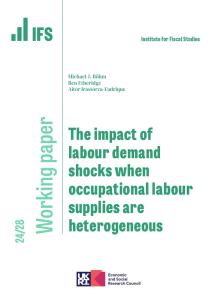As the UK exits the most acute phase of the COVID-19 pandemic, attention has turned to ‘long COVID’, which is on the rise and becoming no less severe. We use data from the UK Household Longitudinal Study, collected during 2021, to learn more about the characteristics of long COVID sufferers, and to assess the impact long COVID has on labour market outcomes including hours, earnings and employment.
Key findings
- According to the Office for National Statistics, almost 2 million people, or 3% of the population, had long COVID by the end of May 2022, of whom 72% were limited by the condition and 21% were limited ‘a lot’. These numbers have been rising steadily since the middle of 2021.
- The impact of long COVID is felt unequally. Existing work finds that sufferers are more likely to have a pre-existing health condition, be female and be middle aged. We show that they are also more likely to live in social housing, to have been claiming benefits before the pandemic, and possibly to be in poverty.
- By examining how outcomes have changed since before the pandemic for long COVID sufferers and similar individuals without the condition, we estimate that one in ten people who develop long COVID stop working, with sufferers generally going on sick leave (rather than losing their jobs altogether). As a result, hours worked on average reduce by about 2½ hours per week and earnings by £65 per month (6%), or £1,100 per person who drops out of work. Our estimates suggest that while the prevalence and severity of COVID remain
at current levels, the aggregate impact is equivalent to 110,000 workers being off sick. - At the individual level, long COVID shows some persistent labour market effects, with impacts being felt at least three months after infection. Further research would be required to precisely determine the duration of the impact.












